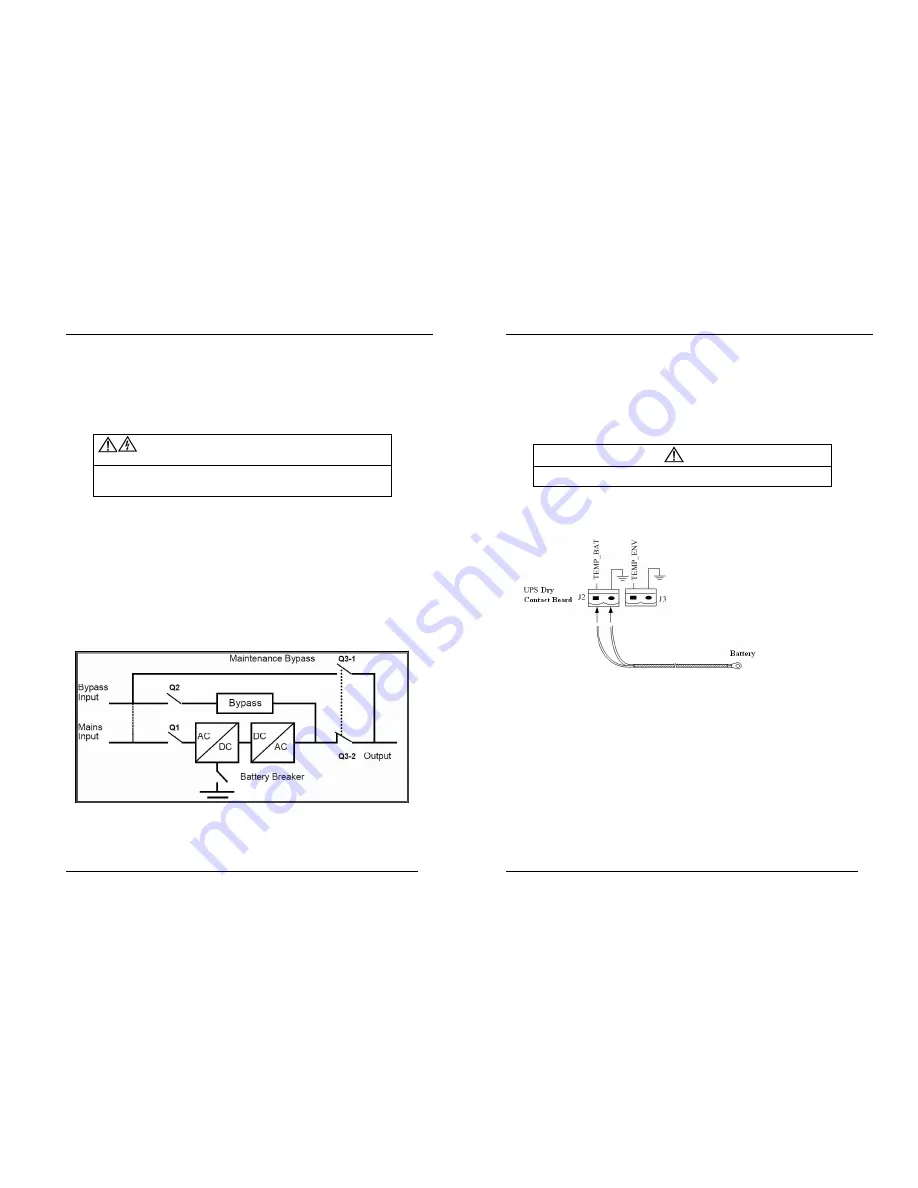
-
27
-
NS3000 Series User Manual rev.01
Chapter 3 Operations
This chapter introduces the basic knowledge of UPS operations, including working principle, operation mode, battery
management and protection.
Warning: Hazardous mains voltage and/or battery voltage present(s) behind the
protective cover
1
.
The components that can only be accessed by opening the protective cover with tools cannot be
operated by user.
2
.
Only qualified service personnel are authorized to remove such covers.
3.1 Introduction
UPS provides high quality uninterruptible AC power to your critical load. The power from UPS is free from voltage
and frequency variations and disturbances (interruption and spike) experienced at the Mains AC input supply.
This is achieved through high frequency double conversion power pulse width modulation (PWM) associated with
full digital signal processing control (DSP), which features high reliability and convenience for use.
3.1.1 Principle
As shown in fig 3-1, the AC input mains source is supplied at UPS input and converted into a DC source. This DC
source feeds the Inverter that converts the DC source into a clean and input independent AC source. The battery powers
the load through the inverter in case of an AC input mains power failure. The utility source can also power the load
through the static bypass.
When the UPS needs maintenance or repair, the load can be transferred to maintenance bypass without interruption
and the power module and bypass module can be removed for maintenance.
Fig 3-1 System principle framework
-
28
-
NS3000 Series User Manual rev.01
3.1.2 Bypass
. During normal system operation the load is connected to the inverter; but in the event of a UPS overload or inverter
failure, the load is automatically transferred to the static bypass line.
To provide a clean (no-break) load transfer between the inverter output and static bypass line, the inverter output
and bypass supply must be fully synchronized during normal operating conditions. This is achieved through the inverter
control electronics, which makes the inverter frequency track that of the static bypass supply, provided that the bypass
remains within an acceptable frequency window.
A manually controlled maintenance bypass supply is incorporated into the UPS design. It enables the critical load to
be powered from the utility (bypass) supply while the UPS is shut down for routine maintenance.
Note
When the UPS is operating in bypass mode or on maintenance bypass, the connected equipment is
not protected from power failures or surges and sags
。
3.1.3 Battery Temperature Compensation
The UPS can connect temperature sensor which is in the battery cabinet to the UPS monitor unit through battery
temperature interface in order to reach battery management optimization.
Fig 3-2 Temperature compensation diagram
3.2 Operation Mode
NS3000 is an on-line, double-conversion UPS that permits operation in these modes:
l
Normal mode
l
Battery mode
l
Auto-Restart mode
l
Bypass mode
l
Maintenance mode (manual bypass)
l
ECO mode
(Settable by s.w.)
l
Frequency converters mode
( only to request)
l
Parallel operation redundancy mode (Optional)











































